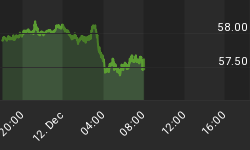"Everything is both simpler than we can imagine, and more complicated that we can conceive." - Johann Wolfgang von Goethe
Never a more perfect quote was written to epitomize what charts illustrate for me and the markets they describe. Every now and again, the pieces of the puzzle arrange themselves in such a way that the pure simplicity of the chart speaks volumes about the complicated and entangled system it represents.
It just makes sense.
For the last 10 years the respective global equity bourses have traded in an ascending triangle/wedge formation. In essence, trading between the major market inflection points of October 2002, October 2007, March 2009, and just recently - April 2011.
And while the last pivot is equally important as a major market inflection point, it is certainly more discrete - predominantly because it was not a new all-time high and still appears in the rear view mirror.
At the end of April I had a brief chart (Bull-Trap) that described the yet to be fulfilled bull-trap as it was first breaching resistance. In light of the previous note on Spain, I thought it would be compelling to show the same time period with several different markets. The trap is rather evident on all of the respective charts.




As evident in our own long-term chart, the extreme market stresses during the fall of 2008 did not arrest the declines at the respective trendlines that served as support for other equity markets. We could very likely see Germany have a similar cascade if the crisis moves to a disorderly climax.

The following two charts present what I perceive to be significant vulnerabilities to the deflating commodity trade that have been in place since 2002.


As I illustrated earlier in the year (see Here), the CRB index hit its 61.8% fibonacci retracement level in the Spring and has bounced through its respective underlying supports at 50% and 38.2%. Should the weakness continue to persist, as I believe it will - the index will find itself in a relative technical no-man's land on its way back to the 2009 low.

This will likely be reinforced by the secular sea-change that is taking place in the currency markets as the dollar continues to strengthen after establishing a long-term low. The sum of this will inevitably become headwinds towards the respective markets that have disproportionally benefited from a weaker U.S. dollar and the "endless" bid, that up until recently - been in place across the commodity sector.

















